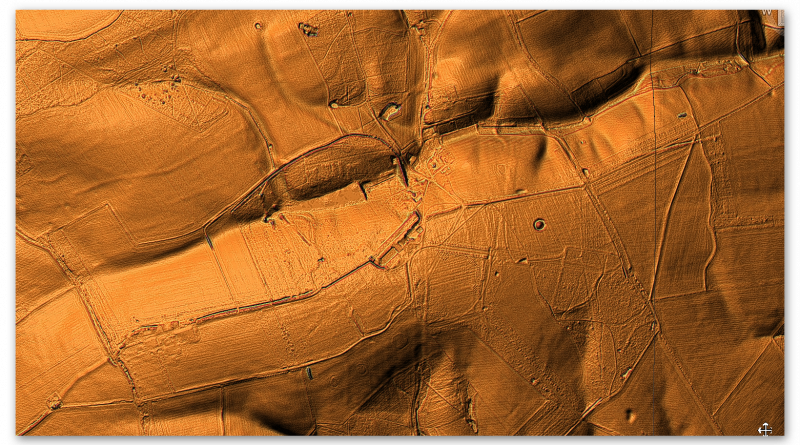
1014708 – section of the north Oxfordshire Grim’s Ditch at Model Farm on the Ditchley Park Estate
Scheduled Monument List Entry Ref: 1014708 – Grid Tile: SP32SE – Oxfordshire
GE Satellite Map
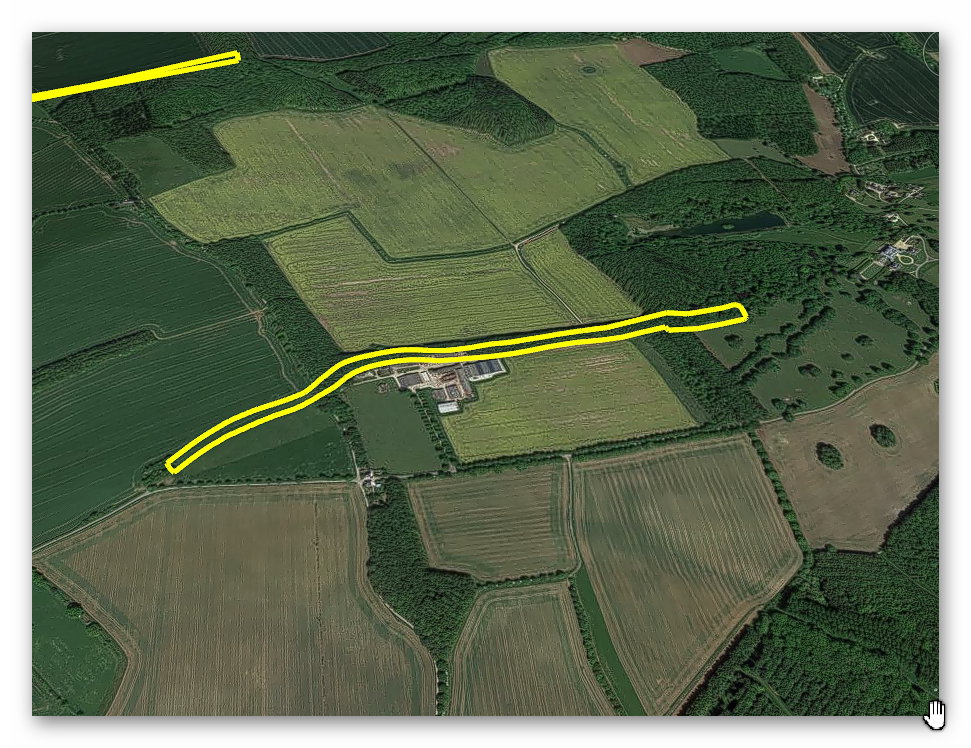
OS Map
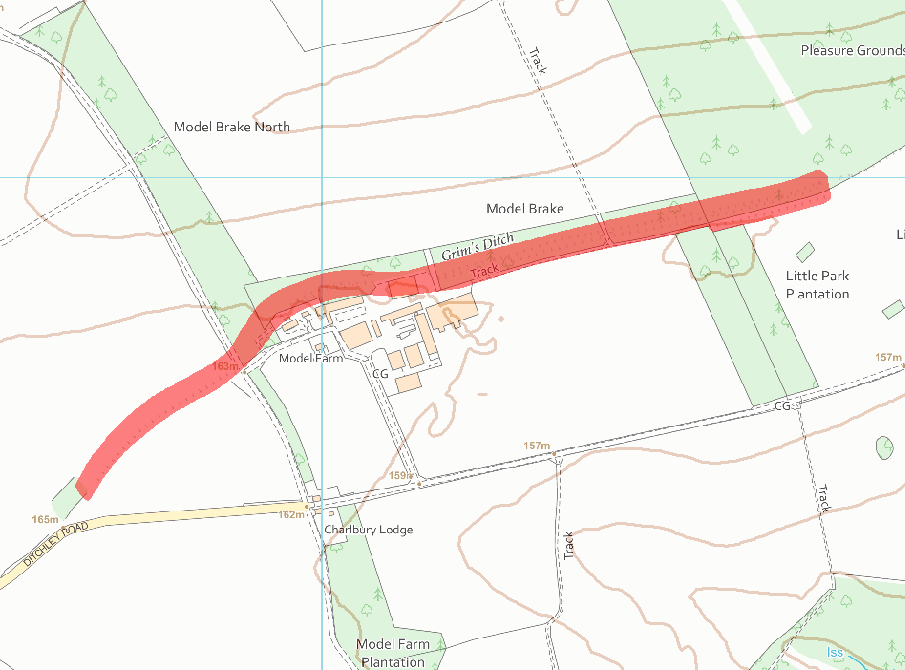
OS 1800s Map
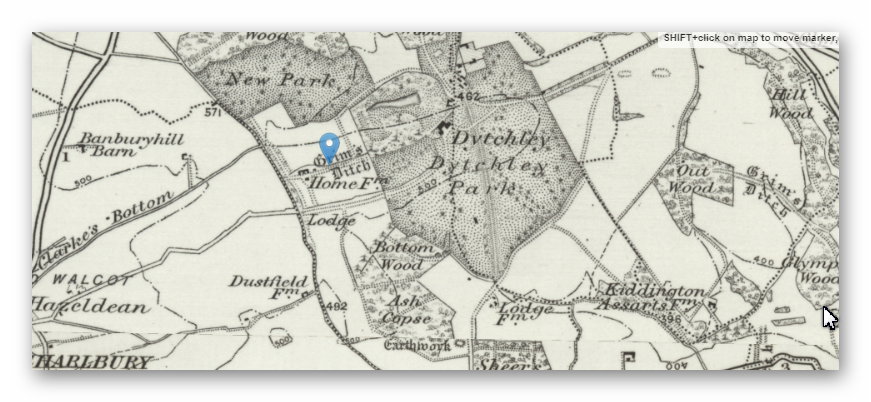
LiDAR Map
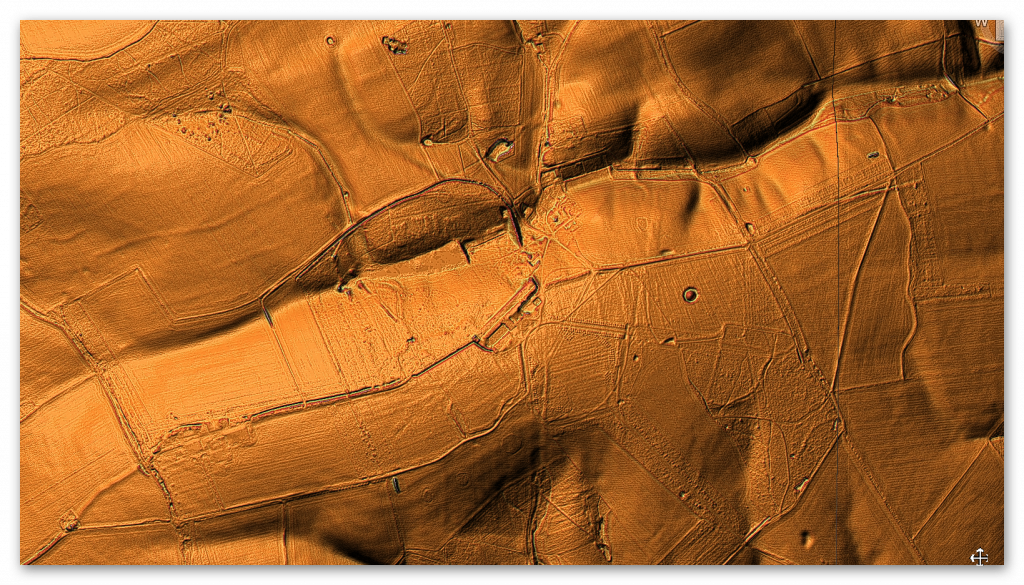
National Grid Reference: SP 38173 20873
Length: 1100m
Orientation: ENE
Class Designation*:
Overall Width (m): 16
Ditch Width (m): 6.5
Bank Width (m): 6.5
Connectivity**: River
Ditch Shape:
Volume (cu.m): 10,725
Man hours to complete:
Quarries within 200m: 11
Springs within 200m: 6
OS Map
Fly Around
Details
The monument includes a 1100m long section of the north Oxfordshire Grim’s Ditch running broadly east to west through Model Farm on the Ditchley Park Estate. The monument survives as a clearly visible bank and ditch along the majority of this length although its western end and some of the other sections have been levelled by cultivation over the years. However, it is known from partial excavation and aerial photographs that these sections survive buried below the modern ground surface. This stretch of Grim’s Ditch includes a large linear stone and earthen rampart 6.5m wide and standing up to 1.5m high in some places, with an average height of 1m. This rampart would have been topped by a wooded palisade fence c.1m high. Beyond the rampart, to the north, a 1.5m wide berm separates it from a 6.5m wide and 1.4m deep ditch. This has become infilled in places but is visible to the east of Model Farm where it has a depth of c.1m. Beyond the outer edge of the ditch at a distance of 3.75m is a 0.5m wide palisade trench 0.25m deep. This would have contained a wooden fence similar to that on the top of the bank. Although this would have had a defensive function, it was probably more useful in preventing cattle and other stock from getting into the ditch. Excluded from the scheduling are the large barn and its concrete floor pad, all lean-to structures, sheds, post and wire fences and other boundary features, although the ground beneath all of the above and the unmetalled track surfaces are included in the scheduling.
References:
https://historicengland.org.uk/listing/the-list/list-entry/1014708
https://prehistoric-britain.co.uk/dyke-construction-hydrology-101
Investigation
This is an area of massive Paleochannels with associated Quarries – we have found a similar Dyke to Grimes Ditch directly north of Grimes meeting the same Paleochannel that Grimes links into:
Grid Tile: SP32SE
National Grid Reference: SP 38651 21541
Length: 894m
Orientation: ENE
Class Designation*:
Overall Width (m): 19
Ditch Width (m): 6.
Bank Width (m): 6 x 2
Connectivity**: Paleochannel
Ditch Shape:
Volume (cu.m): 5.364
Man hours to complete:
Quarries within 200m: 2
Springs within 200m: 1
Further Reading
For information about British Prehistory, visit www.prehistoric-britain.co.uk for the most extensive archaeology blogs and investigations collection, including modern LiDAR reports. This site also includes extracts and articles from the Robert John Langdon Trilogy about Britain in the Prehistoric period, including titles such as The Stonehenge Enigma, Dawn of the Lost Civilisation and the ultimate proof of Post Glacial Flooding and the landscape we see today. . (TSE DVD Introduction)
Robert John Langdon has also created a YouTube web channel with over 100 investigations and video documentaries to support his classic trilogy (Prehistoric Britain). He has also released a collection of strange coincidences that he calls ‘13 Things that Don’t Make Sense in History’ and his recent discovery of a lost Stone Avenue at Avebury in Wiltshire called ‘Silbury Avenue – the Lost Stone Avenue’. (TSE DVD Introduction)
Langdon has also produced a series of ‘shorts’, which are extracts from his main body of books:
For active discussions on the findings of the TRILOGY and recent LiDAR investigations that are published on our WEBSITE, you can join our and leave a message or join the debate on our Facebook Group.
For in-depth information about British Prehistory, we invite you to explore www.prehistoric-britain.co.uk, an extensive resource featuring archaeology blogs and investigations. This collection includes modern LiDAR reports that shed light on ancient landscapes. Additionally, you will find extracts and articles from the Robert John Langdon Trilogy, offering fascinating insights into Britain during the Prehistoric period. Some notable titles from the trilogy include “The Stonehenge Enigma,” “Dawn of the Lost Civilisation,” and groundbreaking evidence of Post Glacial Flooding and its impact on the landscape we see today.
Robert John Langdon has further enriched the exploration of Prehistoric Britain through his YouTube web channel, boasting over 100 investigations and video documentaries that complement his classic trilogy. In addition to his extensive work, Langdon has unveiled a compilation of intriguing coincidences titled “13 Things that Don’t Make Sense in History.” He has also brought to light his recent discovery of a forgotten Stone Avenue in Avebury, Wiltshire, aptly named ‘Silbury Avenue – the Lost Stone Avenue.’
For those who wish to actively engage in discussions about the findings from the TRILOGY and recent LiDAR investigations, we invite you to join our community. You can participate by leaving messages and joining debates on our dedicated Facebook Group. We encourage open dialogue and the exchange of ideas to foster a deeper understanding of Prehistoric Britain and its fascinating mysteries.
As you embark on your journey through British Prehistory, we hope these resources provide valuable insights and inspire further exploration of this captivating field of study.
NB. Recent investigations have indicated the location of hundreds of Quarries and pits built around Wansdyke and how the Dykes were used to transport the minerals transported in these Dykes – see the main site for details of blogs and books on this new discovery.
